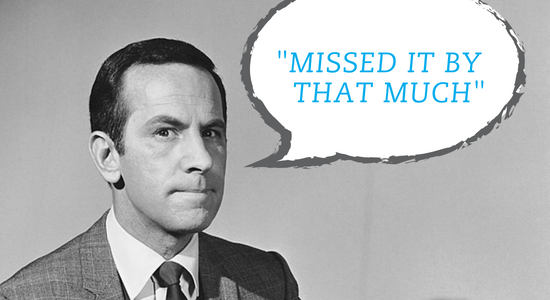While doing my time with the TharpSter TreadMill this morning at a time of day when I would prefer to be on a plane somewhere between unconscious and comatose, I had an epiphany. It’s beyond me how anyone can have such a sudden realization at 5:30 in the morning when one’s ears are populated with the windmill driven arm of Pete Townshend hitting those three chords in “Baba O’Reilly”. Yet still, it happened anyway. It was really quite a simple understanding too. I didn’t have to monologue over the human condition or utter any type of soliloquy in order for the government mandated, compact fluorescent light bulb to illuminate over my flesh covered skull.
In the time that TharpSter.Org has been up and running, I’ve been quite critical of the universal healthcare plan which has littered this country’s landscape for the last few months. My criticisms of the plan are based on two very big points of consideration:
- The plan being considered in the House of Representatives is a massive assault on the most basic of our freedoms. I could lay out those assaults for you, but that practice has been done out here in the conservative blogosphere ad nauseam. Read the bill for yourself or go find out what the summaries say. You can find one by John David Lewis right here. Don’t forget what Betsy McCaughey has found in reading the bill a few times as well. One of her initial analyses can be found here. Unexpectedly enough, there are probably more American citizens outside of government that have read this bill than in the very house where the bill is being considered. Finding a member of the House who can tell you they’ve read this whole thing is about as easy as predicting what the Pick Six will be in tonight’s lottery drawing. The average American’s ability to churn the gumption to go look up the content of the bill and understand what it does has been a driving force behind the spirited town hall meetings of late.
- The President keeps talking about the benefits of his plan. Issue number one to found with this is that the benefits he’s touting are inconsistent with the language in the House version of the bill. Has he read it? Does he know all of the details in there? Are those details consistent with what he told the Pelosi Mafia to gin up? The left hand of the American government doesn’t seem to know what the other left hand is doing. The other issue is in the President’s plan itself. What plan? Ink has not been put to paper from the White House in a publically viewable manner which bears any resemblance whatsoever to a universal healthcare plan. To this point, TOTUS and The Symbiont are relying completely on Congress to write this thing.
All throughout the news of debates over the issue of healthcare, the GOP and opponents of the plan have been called to the matt by the proponents to come up with a better plan. It’s at this very point, my dear reader, that the epiphany hit me like that bird hit Fabio’s nose on the rollercoaster all those years ago.
Of all I have written about universal healthcare, I have yet to put forward a plan of my own. I don’t really have any right to bitch, gripe, and moan about the plan unless I can suggest an alternative solution. That being said, I suggest you buckle in and pull up real close to your monitors for this one. I present to you, the TharpSter Healthcare Plan. As you can guess, this plan will use and incentivize the free market instead of relying on government. It will also do in about 1500 words what the currently proposed plan doesn’t seem to do with an additional thousand pages.
I should probably preface this by outlining the targeted demographic for this plan. For those who cannot afford a plan, I would tend to suggest that if the government really, really wanted to fix the healthcare issue for this group, then they have no further to look than to Porkulus. Take a wad of cash which is earmarked to be spent in a few years on some non-stimulative project or two and invest it now in a quality healthcare plan for the poor. It would be better if management of the plan was turned over to the private sector. Does anyone want to take bets on whether the government will do this?
I am primarily looking at the group of people who would be most heavily affected by the plan which is being considered in Congress right now. Included in this group would be those of us who are already insured and either do or do not like their current plan, and those who choose not to participate in a healthcare plan for whatever reason.
The first thing we need to do is put some real tort reform into place. Any talking head out there who wants to reform our healthcare system without making significant changes to tort law is barking up the wrong tree. The current status perpetuates lawsuit abuse and higher costs for all parties involved. Strengthen the limitations on the basis of pain and suffering and we start down the right path to real reform. For those who feel the insurance industry is the root of all evil in all things involving healthcare, consider this. Lower premium costs could lead to lower profits. That’ll teach’em.
Okay, so we’ve heard about tort reform over and over again. That’s nothing new. Let’s talk about the financing mechanism. Obviously, there are the classics which never get old. Increasing old taxes, and creating new taxes are good old stand-by’s, and never fail to get those of us who think we are overtaxed anyway whipped up into a frenzy. The problem is that any plan that relies on tax increases is acting under the false assumption that government should be involved with our healthcare decisions. Get government out of it.
The meat of the financing mechanism should remain with the individual. This can be done by expanding medical savings accounts (MSA). Here’s how you do it.
- MSA first – Most employee health insurance premiums are paid via pre-tax payroll deduction. The employer deducts the given premium amount from each of the employees paychecks and then sends the money off to the insurance company. In addition to the premiums, several companies provide the option for a MSA in which the employee can contribute pre-tax dollars which can be used to reimburse out of pocket expenses like co-pays for office visits and prescriptions. The problem is that the MSA has a “use it or lose it” clause that forces the employee to use every penny of the savings on qualified medical expense. If they don’t use it in a given calendar year (plus grace period), the money goes to Uncle Sam. Under the TharpSter plan, the entire premium amount along with the extra MSA contribution amount would go directly from the employer to the employees MSA, tax free.
- Invest the MSA in a financial services market – That’s right. Give the employee the option to invest his/her hard earned money in the investment vehicle of their choice. Choose from a plethora of stocks, bonds, mutual funds, commodities, certificates of deposit, savings accounts, or a diversified mix of any and all of them. A specific class of shares could be created for those vehicles which deal in shares where sales charges and operating expenses could be kept relatively low for the benefit of the consumer investing the money.
- Let the employee shop for a healthcare plan – Put the consumer in the driver’s seat on this one. Give them the ability to shop for a plan, whether it’s offered by the employer or not. Make the insurance companies compete for the business.
- Use the MSA for all premium and co-payments – The consumer could set up a direct draft process with the insurance company to have payments made via ACH from the institution where the MSA is invested.
- Lose the MSA “use it or lose it” clause – If the consumer doesn’t use the fully contributed portion of elected deferrals in the given 12 month period, let them retain the assets in their MSA. Do not confiscate it. After the unconfiscated money is invested for a certain period of time, it can then be removed from the MSA for reasons other than qualified medical expenses.
Consider what the financing mechanism does. It creates genuine competition in the health insurance industry by giving the consumer the right to take their business elsewhere. It provides the consumer with the incentive to save and invest their money for the benefit of themselves and the economy. It creates thousands of jobs in the financial sector where MSAs are held and serviced. It puts more of the decision about individual healthcare choices in the hands where it should be, which is not the government.
Now obviously there are additional details in this plan which would need to be ironed out, however it does lay a ground work for real and honest healthcare reform. There’s one more thing it does too. Since I’ve presented my own plan, I’m now officially justified in bitching about the one being considered.








